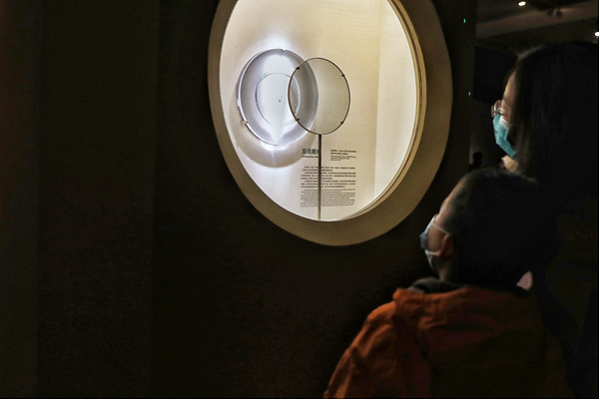
Visitors appreciate a carbonized grain of rice excavated from the Shangshan site in East China's Zhejiang province at an ongoing exhibition, titled Rice, Origin, Enlightenment, at the National Museum of China in Beijing, which runs through Jan 21. [Photo by Jiang Dong/China Daily]
Relics from site dating back to Neolithic era discovered in Yiwu, Zhejiang province, now on show in Beijing, Lin Qi reports.
Yiwu, in East China's Zhejiang province, could be called a "global commodity center"-a variety of products flow from its factories and are transported around the world. This high-tech global center of light-industry commerce is also home to a Neolithic relic site of vital importance, dating back around 9,000 years and viewed as one of the first indications of Chinese civilization.
Since 2012, archaeologists have been carrying out excavations in Qiaotou village, to the west of downtown Yiwu. At one site, covering some 2,400 square meters, they have found domesticated rice, stone tools, painted pottery, tombs and remnants of surrounding moats. These discoveries represent clear evidence of the settlement of an archaic people.
Qiaotou is one of several sites that have been discovered in Zhejiang that are believed to belong to the Shangshan Culture from around 11,000 to 8,500 years ago.
Shangshan Culture was first discovered by Chinese archaeologists after excavating a Neolithic site in Shangshan village, Pujiang county, Zhejiang, in November 2000. Since then, some 20 relic sites in the province, dating to the culture's early, middle and late stages, have been detected.
Researchers believe they have found the earliest examples of cultivated rice grains and painted pottery in China at the sites, as well as the ruins of pile dwellings and ground houses that provide evidence of the earliest human settlement in the country.
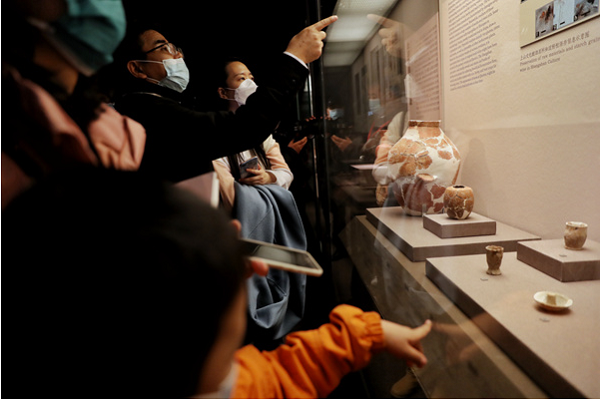
Visitors discuss examples of colored pottery recovered from the excavation sites in Zhejiang province, which are on show at the exhibition. [Photo by Jiang Dong/China Daily]
Now, at the National Museum of China in Beijing, visitors are presented with a vivid picture of the lives led by the people who once inhabited the sites, at the Rice, Origin, Enlightenment exhibition, which runs through Jan 21.
On show are some 200 objects unearthed at the Shangshan Culture sites, such as Shangshan and Qiaotou.
What has grabbed much of the attention is a carbonized grain of rice. It was excavated in 2006 at the Shangshan site, and measures around 3.7 millimeters in length.
Jiang Leping, the archaeologist at the Zhejiang Institute of Cultural Relics and Archaeology, who first discovered the Shangshan Culture, says that the discovery of rice grains means that people, after finding wild rice seeds, began to cultivate them for domestic use. This involves growing, reaping, processing and grinding to form "the initial stages of rice farming".
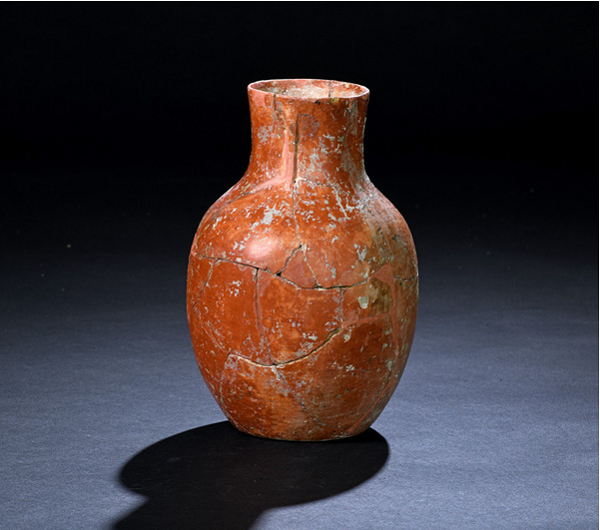
Exhibits on display at the National Museum of China in Beijing include a restored ceramic pot. [Photo provided to China Daily]
"We found a number of grains of rice at the sites from the middle and late stages of Shangshan Culture, much more than at early-stage sites," Jiang says.
"It shows that, as time went by, rice farming increased and eating it became even more popular."
Painted pottery is seen as another important symbol of prehistoric culture. A variety of vessels at the exhibition are further proof of the brilliance of Shangshan Culture.
Chen Keshuang, a researcher and curator at the National Museum of China, says pottery items excavated from the sites are the earliest of their kind found in China.
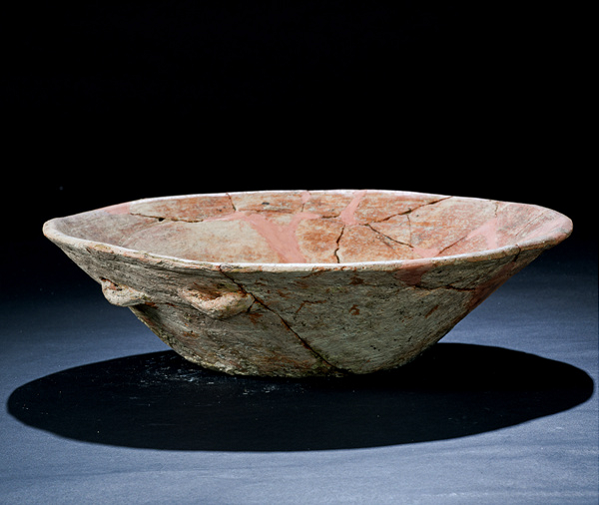
Exhibits on display at the National Museum of China in Beijing include a wide-mouthed pottery basin. [Photo provided to China Daily]
"A large number of these vessels were painted in red and some decorated with white patterns. The sun is one common motif, and reflects people's consciousness and beliefs at the time," Chen says.
Archaeologists found husks, leaves and other rice residue being mixed with clay to make pots, jars, plates and bowls, Chen adds, and the analysis of remnants found in some of these vessels shows that they were used to store wine or fermented beverages, which suggests that these pottery items could be the earliest wine vessels in existence.
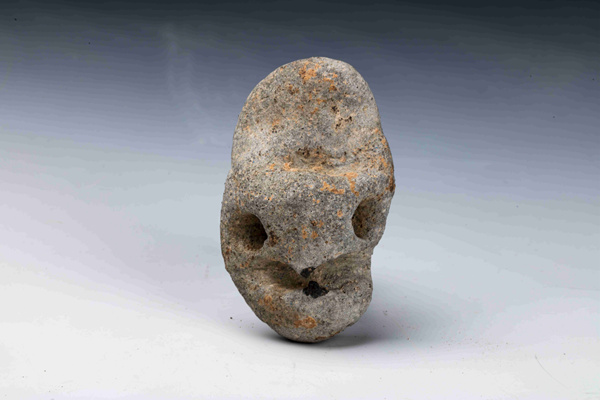
Exhibits on display at the National Museum of China in Beijing include a carved stone. [Photo provided to China Daily]
The exhibition, meanwhile, invites the audience to join in a discussion about one of the unsolved questions surrounding Shangshan Culture: How people back then prepared the rice.
Some researchers say a stone-cooking method was used: People threw heated stones into widemouthed pottery basins-some of these are on show-and the heat would cook the rice.
Others say that Shangshan people first ground the grains into powder before steaming and boiling them.
The Shangshan sites, together with other Neolithic culture sites in Zhejiang-Hemudu and Liangzhu-were inscribed on the list of the top 100 archaeological discoveries in China of the past century. The top 100 list was announced by the National Cultural Heritage Administration in October to mark the birth of modern Chinese archaeology.
Yu Peifen, Party secretary of Pujiang county, says that there are plans to build the site into a Shangshan Culture museum by 2025, and also explore its inscription onto the UNESCO World Heritage list.